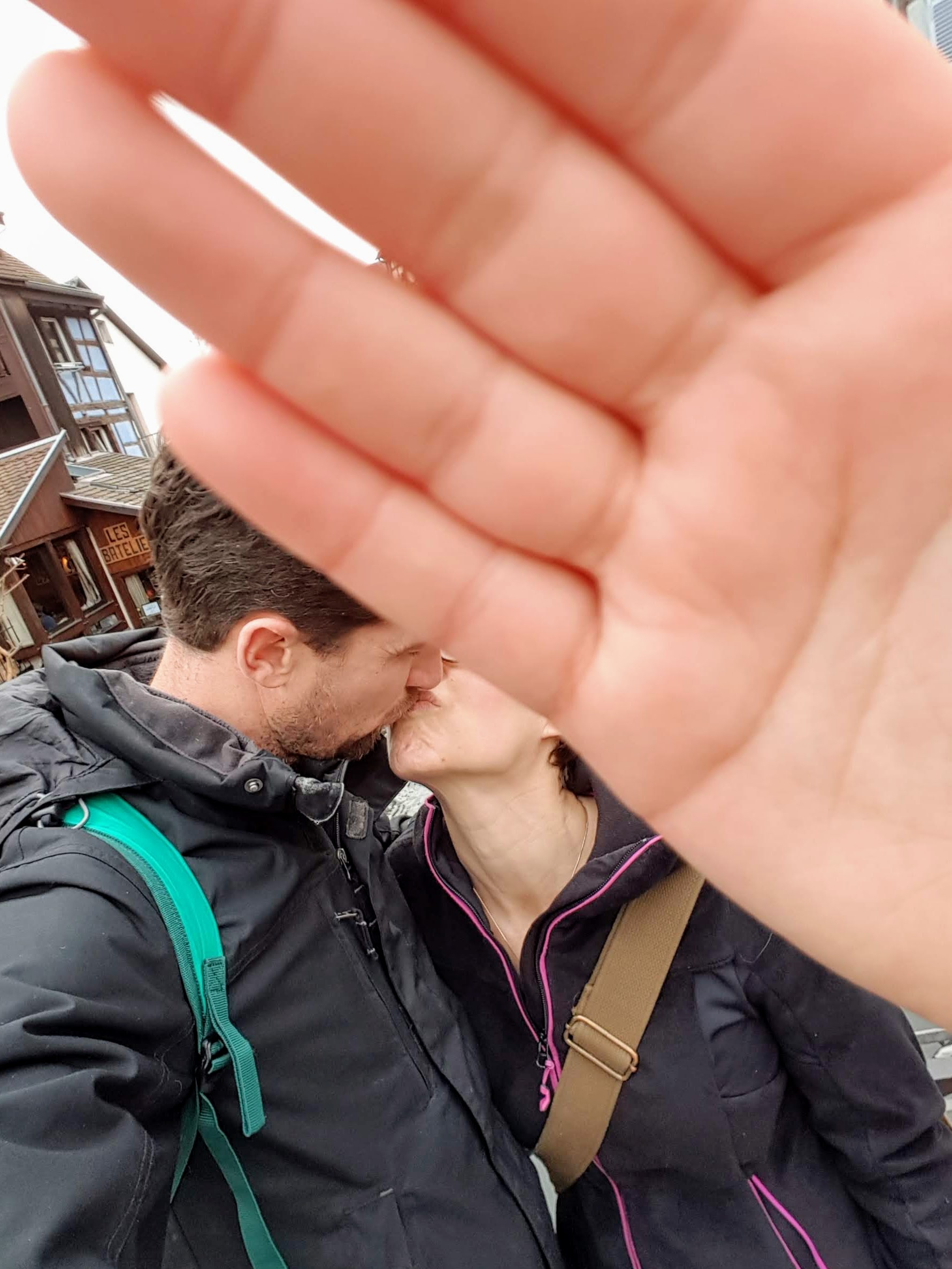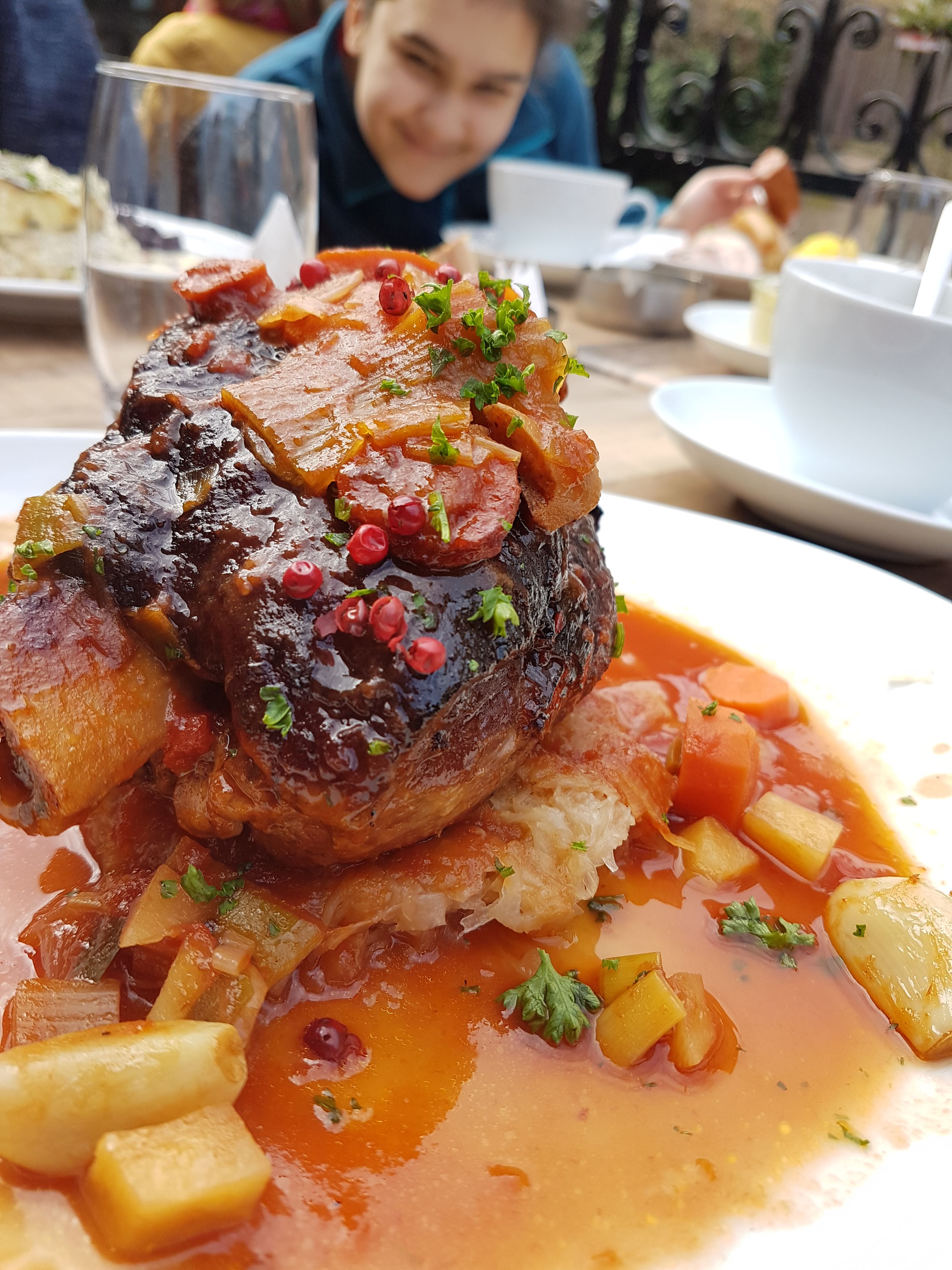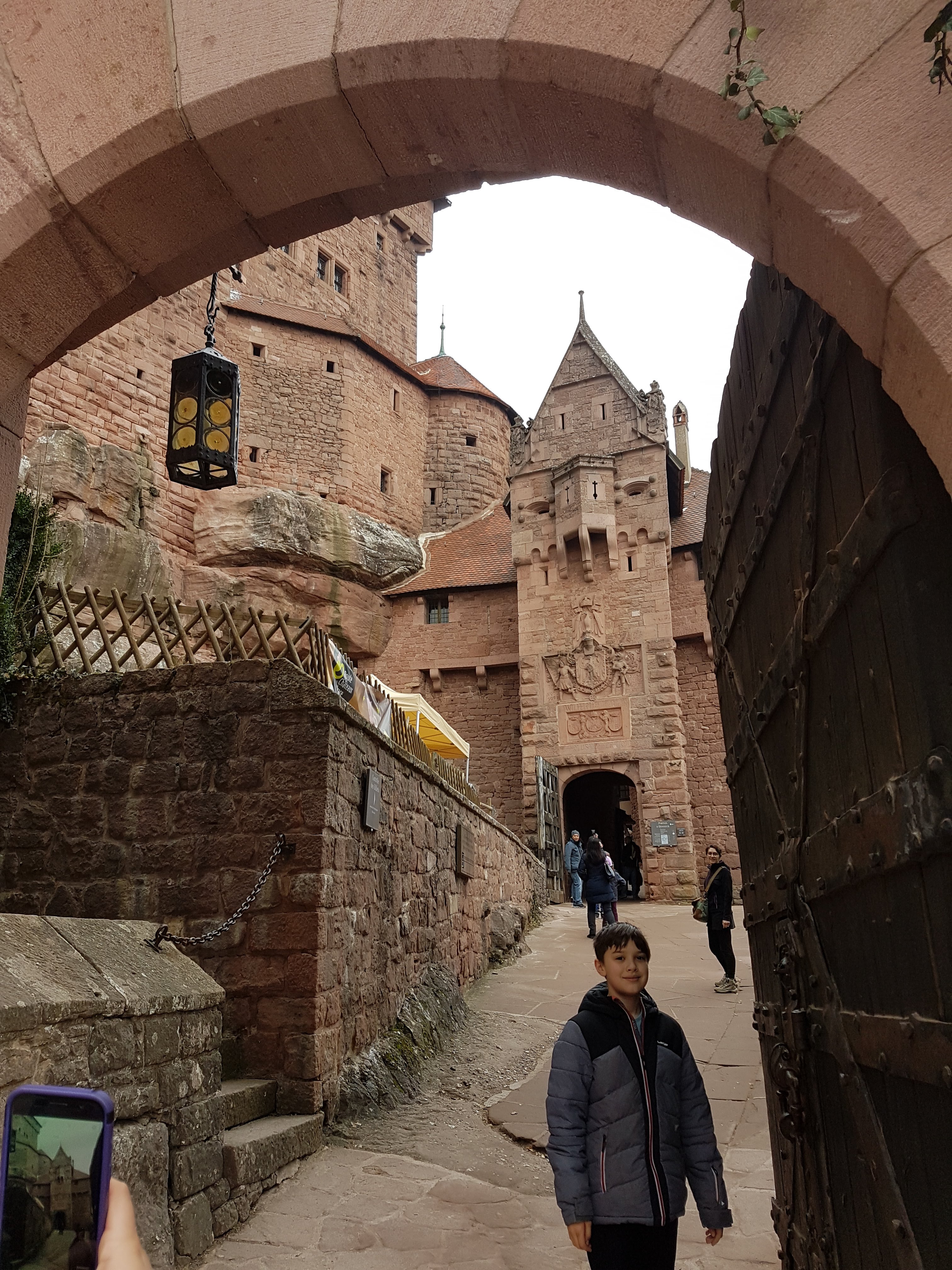| |
We have come a ways from our holiday in Malta two years ago, during which Tony had to negotiate hard with me for a day or two out of a two-week vacation that did not include hard-core sightseeing. These days I am more or less content to have some relaxing days during a holiday, especially if there is somewhere beautiful nearby for me to explore with Lyra while everyone else plays multiplayer games and watches YouTube blooper videos. But I couldn't visit Alsace even for the lofty purpose of skiing without spending a day immersed in the history and culture of the region. So on the last day of our February holiday, we set out for the picturesque town of Colmar, subject of innumerable Instagram photos.
Colmar's history dates back to the 9th century. We had a giggle over the first important recorded historical event there, a diet organised by Charles the Fat in 884. The whole place has a late-medieval/early renaissance feel, with half-timbered buildings and colourful window shutters. In fact, it looks something like Belle's provincial town.
We started out on the "tourist trail", marked throughout the old city by bronze pointers emblazoned with the Statue of Liberty; Frederic Auguste Bartholdi, the sculptor who designed France's iconic gift to the United States, was born in Colmar.
We browsed through a delightful little antique market arranged around the 13th-14th century Eglise des Dominicains.
We tried colourful candied kiwis, papaya, pineapple, ginger and strawberries.
We were distracted at every turn by quaint architectural details like these gloriously ornate door hinges (notice also the fleur-de-lis on the wrought-iron fence).
Everywhere you looked, it was like a fairytale or a historical event come to life. General Jean-Baptiste Kleber, depicted on this ornate hanging sign on the street bearing his name, was one of the most important generals in the French Revolutionary Wars, as well as a notable architect. He was appointed by Napoleon to command the French forces in Egypt after its conquest. There he opened the first Masonic lodge, led the dramatically successful Battle of Heliopolis, and was in due time stabbed to death. His assassin, a Syrian student named Soleyman El-Halaby, was quickly captured, tortured and executed. Then his skull was shipped off to France and used as a prop in phrenology classes to teach medical students about the bump of "crime" and "fanaticism".
The most charming part of Colmar is a set of canal streets nicknamed "Little Venice" (although we Amsterdammers could probably think of another equally appropriate nickname). We had lunch there on the terrace of an impossibly quaint café overhanging the water, where we ate hearty food laced with sauerkraut and drank the famous Alsatian wine.
After lunch we were off to the Chateau du Haut-Koenigsbourg, just a half-hour north of Colmar. Like many castles we've visited, it was attainable only by means of a winding, many-switchbacked road up the mountain.
It's a massive maze of courtyards and drawbridges, which inspired the architecture of both Howl's Moving Castle and Peter Jackson's Minas Tirith.
Situated as it is on a strategic border between France and Germany, the castle has changed hands many times. In the 15th century it was used as a hideout by robber barons, which so annoyed the neighbours that they burned it down.
Two centuries later during the Thirty Years' War of religion the Protestant Swedish army burned it to the ground again, after which it lay in ruin for hundreds of years.
In 1899 the castle came into the possession of the German Kaiser Wilhelm II. Determined to make it a symbol of German culture that would legitimise his rule over the much-contested region of Alsace, he commissioned the architect Bodo Ebhardt to reconstruct it as it would have been in the 15th century. Ebhardt was a notable expert on Medieval castles, and strove to re-create the castle with as much historical accuracy as possible. He analysed the remaining ruins, consulted archival records, and made comparisons with other European castles of the period, as well as carefully retrieving thousands of artefacts found at the site. A number of fascinating before/after photos displayed at the castle attest to the scale of the project.
Both the outer walls and the inner living apartments are beautifully restored. Giant ceramic stoves in every room made it seem like it would have been fairly comfortable by Medieval standards.
Ebhardt's methods and the entire project of restoration were criticised from the start, both on archaeological and political grounds. The French were understandably reluctant to support a monument to German dominance in the region. Archaeologists and historians argued over specific features of the restoration, as well as whether any restoration at all was appropriate given the historical significance of the site. To commemorate this controversy, on the ceiling of the main hall is this depiction of the architect, fighting off a swarm of bees with a club.
The castle and surrounding areas ended up in French hands after WWI, were annexed again by Germany during WWII, and then reverted back to French control at the end of the war, although there was still French ambivalence about the restored Haut-Koenigsbourg's symbolic glorification of German rule. The castle was finally designated a French Historical Monument in 1993.
On a clear day (which this was not), you can apparently see all the way to the Black Forest. As it was, walking around the castle ramparts gave a pretty impressive view of Alsace, France on the one hand and southern Germany and Switzerland on the other. In this era of European unification, Chateau du Haut-Koenigsbourg can be viewed by inveterate EU-apologists like me as a sort of symbol of French-German and wider European peace.
It was a lovely end to what we all agree turned out to be a pretty close to perfect holiday.
|
|

|

|

birthplace of the designer of the Statue of Liberty |

|

|

|

|

|

|

|

Axa shutting down the kissing selfies |

|

Little Italy |

|

|

|

Château du Haut-Kœnigsbourg |

|

|

|

|

hunting trophies |

before and after photos |

|
|